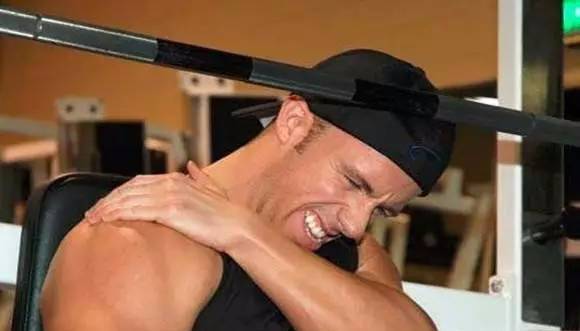Do you have this feeling?
â–¼
After fitness, I often feel sore muscles, sometimes short-term, after an hour or two of fitness, or the next day after the training.
And in the gym we often hear some fitness veterans say to the novice: "Muscle soreness is right, indicating that you are right, this is long muscles."
But does the muscle soreness really mean that we are right?
There are two types of muscle soreness.
One is muscle soreness that occurs immediately after exercise or after exercise.
The other one appeared on the next day.

Lactic acid accumulation

People who often use the fitness circle are no strangers to this term.
Lactic acid is an intermediate produced by glucose metabolism in the body during exercise. In general, when the energy of the tissue cannot be satisfied by aerobic respiration, that is, when the tissue cannot obtain sufficient oxygen, lactic acid accumulation will occur. Lactic acid causes local muscle soreness, which is why muscle soreness occurs after the first exercise.
But the reason for the muscle pain the next day (after 24 hours) is not caused by the accumulation of lactic acid! ! !
Within one or two hours after intense exercise, the concentration of lactic acid in the blood will return to normal, so the so-called "acid run" popular in the circle is actually unnecessary.
The culprit that causes muscle soreness every other day is actually late-onset muscle soreness (DOMS). But sadly, some fitness enthusiasts, even fitness instructors, have not learned and learned about delayed onset muscle soreness. They still stubbornly believe that all muscle soreness is caused by lactic acid .

Then the small series can give a clear example to refute this point of view.
Under the premise of the same strength, the oxygen consumed by centrifugation training is 2/3 of the centripetal training, and at the same time, less lactic acid is produced.
The researchers did a test for this. In the case of the same speed and distance, the downhill run (centrifugal motion) produced less lactic acid than the horizontal run (central motion), but the next day (after 24 hours) The number of athletes with sore muscles running downhill is much higher than the number of athletes running horizontally. So if all the muscle soreness caused by exercise is caused by lactic acid, then the experimental results should be just the opposite.
However, there is still no clear conclusion about the cause of delayed onset muscle soreness. Some people think that it is caused by slight tearing of muscle fibers or connective tissue, white blood cells acting on damaged muscle fibers and responding to acute inflammation; others think that pain is Not because the muscle cells are damaged, but the cells in the process of muscle strengthening swell, compressing the blood vessels, and then causing pain.

But no matter what the cause of muscle soreness, it is uncomfortable for our fitness friends, so how do we deal with it?
But no previous study has shown that there is a definitive way to prevent or treat delayed onset muscle soreness, but there are ways to reduce DOMS.

Warm up and stretch
â–¼
Warming up for 5 to 10 minutes before exercise helps improve athletic performance, reduce muscle damage and reduce DOMS; static stretching after exercise also helps to reduce pain on the next day.

Cryotherapy
â–¼
Ice is often used in medical practice to relieve pain and swelling caused by injury. The researchers also found that the use of "freezing" can reduce DOMS. Basketball players trained in the NBA have trained to enter the cold pool and "quick freeze therapy" using cryogenic liquid nitrogen. The athletes who have experienced have said that "I feel relaxed at once." A lot."

Step by step
â–¼
In strength training, we must adhere to the principle of gradual and progressive, slowly stimulate the muscles, give the muscles a process of adaptation, thereby reducing the damage of muscle fibers and connective tissue.
NINGBO HOZ TRADING CO.,LTD , https://www.hoz-kitchenware.com